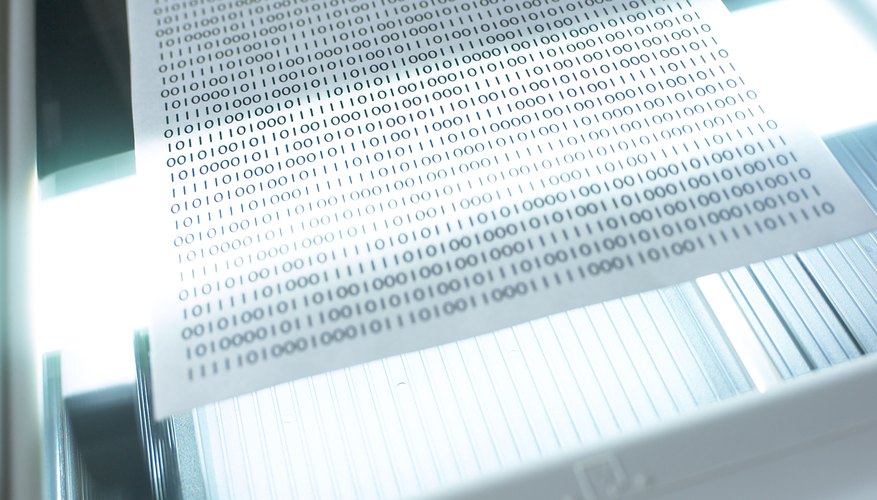When deciding what scanner to buy, the one factor that will have the most impact on your final purchase is the choice between a flatbed and a sheet-fed scanner. Both types of scanners have advantages and disadvantages; which you choose ultimately depends on how you intend to use the scanner and what materials you plan to scan.
Basics
The primary difference between the two types of scanner lies in their design. A flatbed scanner works similarly to a photocopier, with the scan head moving across a stationary item placed on the scanner's glass surface, called the platen. A sheet-fed scanner, on the other hand, resembles a fax machine, with rollers moving the sheet of paper across a stationary scan head.
Versatility
Because of how a sheet-fed scanner works, it can only scan very thin items, such as sheets of paper and other similar items. Furthermore, although items such as photos or stamps can pass through a sheet-fed scanner, they may be damaged by the rollers; protective plastic pouches do exist, but may result in lower-quality scans. A flatbed scanner, on the other hand, can scan bulkier items such as magazines and books and even small three-dimensional objects, such as flowers, seashells or jewellery, without damaging them. If you want to scan a document or item larger than will fit in a sheet-fed scanner, your only way to do so is to fold it, risking damage; if you are using a flatbed scanner, on the other hand, you can simply scan the document in several pieces by placing it on the platen in various positions and then stitch the resulting images together using image editing software.
- Because of how a sheet-fed scanner works, it can only scan very thin items, such as sheets of paper and other similar items.
- A flatbed scanner, on the other hand, can scan bulkier items such as magazines and books and even small three-dimensional objects, such as flowers, seashells or jewellery, without damaging them.
Size and portability
While in operation, a sheet-fed scanner may take up more space than a flatbed scanner designed for the same document size, since it requires a document-holding tray at both entrance and exit. Depending on the model, however, these trays may be folded down or removed, making the sheet-fed scanner take up less space for storage purposes. A flatbed scanner, on the other hand, will take up the same space regardless of whether it is in use or not. Because of this, sheet-fed scanners are inherently more portable than flatbed ones; some sheet-fed scanners are designed to be small enough to fit into a laptop bag, giving you a way to digitize documents while on the go.
- While in operation, a sheet-fed scanner may take up more space than a flatbed scanner designed for the same document size, since it requires a document-holding tray at both entrance and exit.
Convenience
If you regularly scan documents consisting of multiple loose pages, you may find a flatbed scanner frustrating, since you will need to lift the lid and place each page onto the platen manually. Some flatbed scanners do come with an optional automatic document feeder attachment; unless your scanning needs also frequently involve bulky or delicate items, however, a sheet-fed scanner is more likely to closely fit your needs. Conversely, if you mostly plan on scanning bulky or delicate items and only occasionally need to scan multiple-page documents, a flatbed scanner will better serve your purposes.
